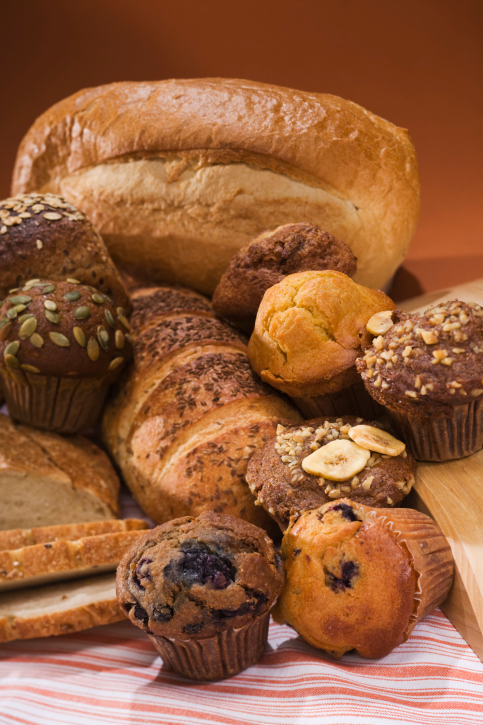Are You Getting Enough Whole Grains In Your Diet?
 Does it ever seem like you can’t open a magazine or turn on the TV without reading or seeing something about how important it is to eat a healthy diet? While you might be getting tired of all the nutrition messages out there, there is a reason that so many healthcare professionals are making such a fuss about what you eat: many studies show that eating a healthy diet can help lower your risk of getting many diseases, like diabetes, high blood pressure, high cholesterol, and obesity.
Does it ever seem like you can’t open a magazine or turn on the TV without reading or seeing something about how important it is to eat a healthy diet? While you might be getting tired of all the nutrition messages out there, there is a reason that so many healthcare professionals are making such a fuss about what you eat: many studies show that eating a healthy diet can help lower your risk of getting many diseases, like diabetes, high blood pressure, high cholesterol, and obesity.
Many people think that they are eating healthfully, but a new study about whole grains suggests that this might not be the case.
What are whole grains?
Grains are the seeds of plants. Common edible grains include wheat, barley, corn, and rice. These are sometimes called “cereal grains.” Each single grain is made up of 3 layers. “Whole grains,” or anything made from whole grains, contain all 3 layers. Here are some examples of whole grains:
- Oats (rolled or “old fashioned”)
- Barley
- Spelt
- Brown rice
- Wild rice
- Quinoa
- Millet
- Buckwheat
Not all foods made from grains contain the whole grain. These are called “refined grains.” Instead of containing all 3 layers, refined grains only have one layer. When the other 2 layers are removed, the grain loses one-quarter of its protein, and most of its nutrients. What’s left? Mostly carbohydrate. Examples of refined grains include:
- White bread
- White rice
- Pasta (unless the box says “whole wheat”)
Why are whole grains so important?
When grains are refined, they lose at least 17 different nutrients! One of the key parts of the grain that is also lost when it’s refined is fiber. Experts think that it might be the fiber in whole grains that gives them their disease fighting power. Losing those other 17 nutrients probably isn’t good, either.
Most people eat a lot of grains everyday—foods like bread, cereal, pasta, crackers, and chips are all made from grains. If these grain foods are refined, you’ll miss out on important nutrients, including fiber.
By eating mostly whole grains, you’ll get more fiber and nutrients from the food you eat, and you’ll be healthier overall. Foods that are high in fiber include:
- Whole grains
- Fresh fruit (apples and pears with skin, bananas, and grapes)
- Fresh vegetables (broccoli, carrots, peas, Brussels sprouts)
- Beans, peas, and lentils
The research
This new study used a health and nutrition survey to try to get an idea of how much whole grain and fiber people eat. About 9,000 people answered the food and nutrition survey questions between 2009 and 2010.
The results
The study found that almost half of all kids, teens, and adults eat no whole grains at all! Only about 3 out of 100 kids ate 3 servings of whole grains a day, which is the amount experts say you should eat. For adults, only about 1 out of 10 people ate 3 servings a day.
The researchers also found that the people who ate the most whole grains had the highest amount of fiber in their diet.
What do these results mean for you?
The answer to this one is pretty clear—there is a good chance that you don’t have enough fiber and whole grains in your diet. What’s the solution to this problem? Simple—eat more whole grains and other foods that are high in fiber. Remember, diets low in fiber have been linked to an increased risk of:
- Heart disease (this includes heart attack, stroke, and heart failure)
- Diabetes
- Obesity
- Some types of cancer
Talk with your healthcare provider if you have questions about your diet, or if you’d like to learn more about how healthy foods can lower your risk of some diseases.

